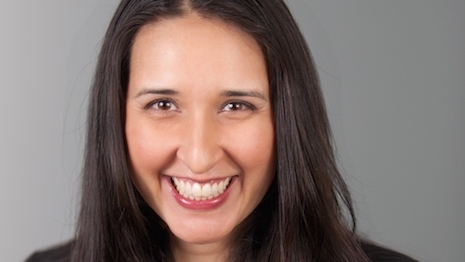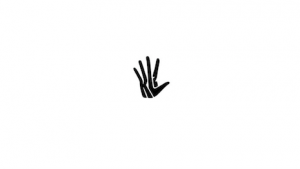- About
- Subscribe Now
- New York,
June 6, 2019

 Safia A. Anand is counsel at Olshan Frome Wolosky
Safia A. Anand is counsel at Olshan Frome Wolosky
By Safia Anand
In today’s day and age, it has become commonplace for brands to enter into various types of arrangements with other brands, celebrities, athletes, artists, designers and influencers.
When parties enter into such arrangements, they need to ensure that they determine who will own the intellectual property created and used during the partnership, and that the contract between the parties explicitly states who will own the intellectual property rights and establishes each party’s rights to use the intellectual property during and after the expiration of the agreement.
If certain intellectual property is just being licensed, that should be clearly set forth in the agreement.
If the intellectual property is meant to be assigned, that should be clearly stated in the agreement as well.
No dribbling matter
Working out ownership issues related to intellectual property at the outset is very important so that controversies as to ownership do not arise later.
An example of what can happen when ownership rights between the parties are not clearly set out early in the relationship has arisen between NBA player Kawhi Leonard and Nike.
Mr. Leonard, a basketball player for the Toronto Raptors, sued Nike on June 3 in the U.S. District Court for the Southern District of California, Case 3:19-cv-01035-BAS-BGS, seeking declaratory relief of non-infringement and a declaration that he created and owns the KL2 logo, that Nike did not author the logo and has no rights to the logo, that Nike is not entitled to copyright registration of the logo, and that Nike defrauded the Copyright Office by intentionally misrepresenting the author of the logo.
 The KL2 logo
The KL2 logo
According to the complaint, in 2011, just after being drafted to the NBA, Mr. Leonard created a logo that included elements that were meaningful and unique to him. He alleges that he traced his notably large hand, and inside the hand, drew a stylized version of his initials “KL” and the number “2”, which he had worn for much of his career.
In October 2011, Nike and Mr. Leonard entered into an endorsement deal.
According to the complaint, at some point during the term of the agreement, Nike began discussions with Mr. Leonard about creating a unique logo to affix to merchandise to be sold under the Nike agreement.
The complaint alleges that Nike provided ideas to modify the logo that Mr. Leonard had created, but Mr. Leonard rejected those ideas for the most part.
The complaint alleges that Mr. Leonard forwarded Nike the logo that he had created and told Nike he would permit them to use the logo during the term of the agreement under his supervision and control.
The complaint further alleges that in early summer 2014, Nike provided a proposal to Mr. Leonard with modifications to the logo that he accepted and that Mr. Leonard “granted Nike permission to affix that logo, based upon [Mr. Leonard’s original logo], on Nike merchandise during the term of the Nike agreement.”
The complaint further alleges that “[Mr.] Leonard’s representatives confirmed that [Mr.] Leonard continued to own the [Leonard Logo].”
According to the complaint, “[Mr.] Leonard never transferred the rights to the Leonard Logo to Nike” and claims that communications between the parties evidence that Mr. Leonard permitted Nike to use the logo for the “specific purpose of effectuating the Nike Agreement for the term of the contract.”
Mr. Leonard alleges that he continued to use the logo on non-Nike goods, including apparel and merchandise used for basketball camps, appearances and charity events, even while Nike was affixing the logo to Nike merchandise.
Mr. Leonard further alleges that “consistent with Nike’s position as a party without any ownership in the Leonard Logo, Nike refused to act several times when [Mr.] Leonard’s representatives learned that third-parties were using the Leonard Logo without authorization.”
KO?
Mr. Leonard alleges that unbeknownst to him and without consent, Nike obtained a copyright registration for the logo and falsely represented in the application that Nike had authored the logo.
Mr. Leonard informed Nike of his intent to use the logo in connection with clothing lines, footwear and on other products, but Nike has objected to such uses.
After the copyright registration was issued, Mr. Leonard filed trademark applications in the United States for the logo and for “KL2” as a word mark. Two of those applications, both for apparel, have since registered.
Mr. Leonard is no longer affiliated with Nike, and the complaint alleges that now Nike has claimed that it owns all intellectual property rights in the logo and demanded that Mr. Leonard cease and desist from his use of the logo.
The complaint further alleges that Mr. Leonard intends to use the logo in connection with apparel and footwear that he is actively developing and intends to use the logo in connection with items he plans on distributing at sports camps and charity events, as well as other products to be determined.
Interestingly, Mr. Leonard is now under contract with New Balance. Thus, it is no surprise that Nike wants to prevent one of its competitors from using the logo.
It will remain to be seen how Nike responds to the complaint and what the underlying agreements say as to the ownership of the logo.
Own IP
This lawsuit can serve as a lesson to luxury brands.
In today’s world, more luxury brands are entering into arrangements with celebrities, athletes and influencers to help grow their brands and reach new customers, whether the deals are in the form of a collaboration, brand ambassador, influencer, or some other type of arrangement.
Often both parties will provide input into designs and other materials that are created, and if not clearly set forth in the beginning, the ownership of intellectual property created during the relationship could be murky.
AS SUCH, we recommend that both parties consider who will own the intellectual property created in connection with these partnerships and that such issues be dealt with upfront.
While such negotiations could be awkward in the beginning when all parties are trying to get along and enter into a deal, the ramifications of such ambiguities could be damaging when the partnership ends.
Safia A. Anand is counsel at Olshan Frome Wolosky LLP, New York. Reach her at sanand@olshanlaw.com.
Share your thoughts. Click here